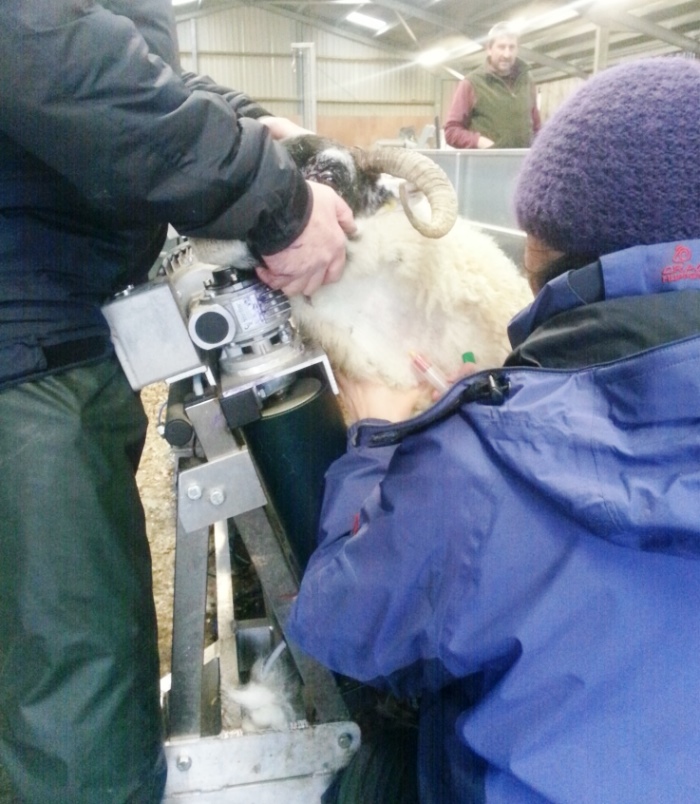Detecting Ewe Under Nutrition In Late Pregnancy
1 March 201970% of foetal growth occurs in the last 6 weeks of gestation making it crucial to avoid ewe undernutrition during this time. BOHB is found in high levels in the blood of undernourished sheep, and so blood sampling to measure it can detect whether feeding is meeting the increased energy demands of pregnancy, while there is still time to adjust the diet. Cases of pregnancy toxaemia are a clear indication of a problem, but are only the tip of the iceberg. Many more subtle effects of ewe undernutrition, outlined below, may go unrecognised otherwise. Undetected ewe undernutrition will adversely affect lamb welfare and flock productivity.
In one study by Russel, three groups of Greyface ewes were fed to maintain BOHB levels at <0.7mmol/l (adequate energy intake); 1.1mmol/l (moderate undernutrition); or 1.6mmol/l (severely undernourished) during the last 6 weeks of gestation. The effects on lamb birthweight are summarised in the table and show a 20 to 25% reduction in the weight of group 3 lambs. Ewes in groups 2 and 3 lost weight. Many studies describe higher mortality rates in low birthweight lambs.
| Ewe Group BOHB | Birthweight of Single Lambs (kg) | Birthweight of Twin Lambs (kg) |
|---|---|---|
| 1 - <0.7mmol/l | 5.99 +/- 0.531 | 4.65 +/- 0.16 |
| 2 - 1.1mmol/l | 5.9 +/- 0.352 | 4.27 +/- 0.124 |
| 3 - 1.6mmol/l | 4.7 +/- 0.392 | 3.45 +/- 0.192 |
SRUC research has shown that:
- Maternal undernutrition reduces lamb vigour and their ability to maintain body temperature
- A larger surface area to bodyweight ratio, reduced body fat and liver glycogen stores
- An increase in the time taken to stand and suck predisposes them to hypothermia, starvation, and infectious disease
- This is compounded by the fact that undernourished ewes show reduced mothering behaviour and decreased colostrum quality and quantity (Dwyer et al)
Research carried out in a low ground flock with 18% lamb mortality showed that lambs which died were lighter, had lower body temperatures after birth and evidence of foetal undernutrition and hypoxaemia. Pre-natal factors, i.e. undernutrition in mid and/or late gestation, were considered to contribute to 71% of the deaths of the 99 sampled lambs (Barlow et al)
Blood samples should be collected around 3 to 4 weeks pre lambing from 5 twin and 5 triplet bearing ewes in the first group to lamb. If the ewes are not scanned, avoid sampling first-lambers. This is an inexpensive test which will allow you to take immediate action to improve lambing outcomes. The target mean BOHB result is <1 mmol/l for scanned ewes, and <0.8 mmol/l if lamb numbers are unknown. Your vet can help you interpret the results. See reference 4 for further information.
References:
1 Russel et al. (1977) Relationships between energy intake, nutritional state and lamb birth weight in Greyface ewes. Journal of Agricultural Science, 89, 667-673
2 Dwyer et al. (2016) Improving neonatal survival in small ruminants: science into practice. Animal, 10(3), 449-459
3 Barlow et al. (1987) Clinical, biochemical and pathological study of perinatal lambs in a commercial flock. Veterinary Record, 120, 357-362
4 Russel (1985) Nutrition of the pregnant ewe. In Practice, 7, 23-28
Eilidh Corr, Eilidh.Corr@sac.co.uk
Sign up to the FAS newsletter
Receive updates on news, events and publications from Scotland’s Farm Advisory Service

